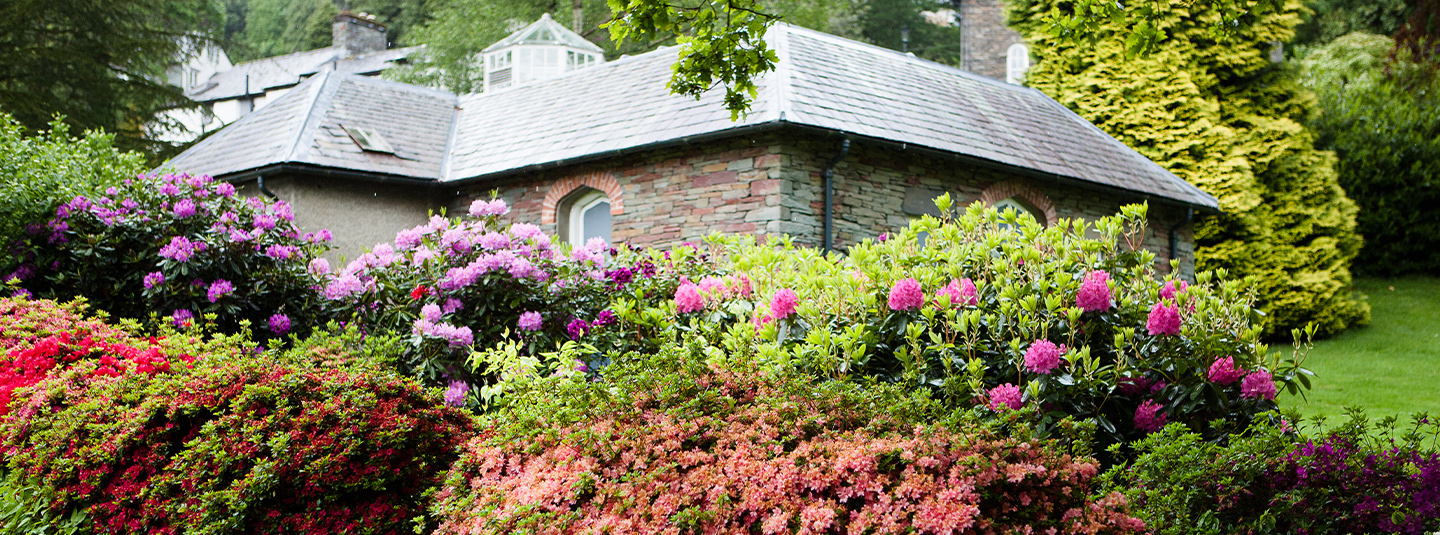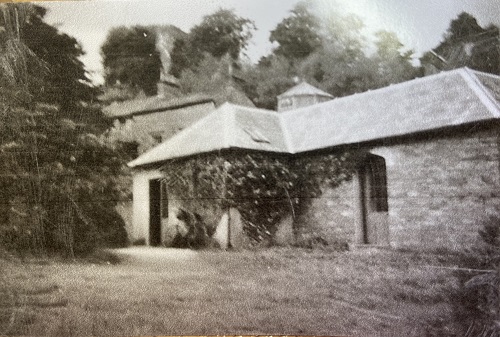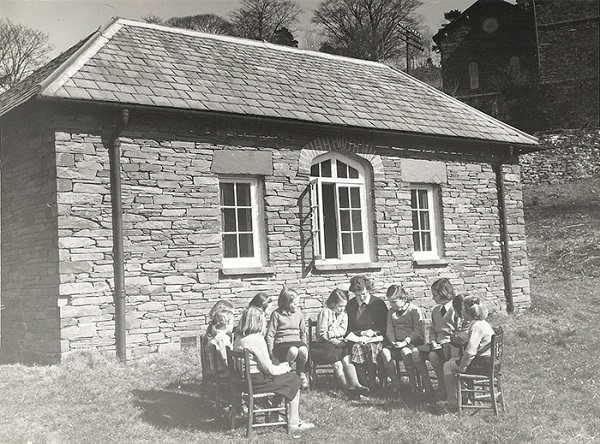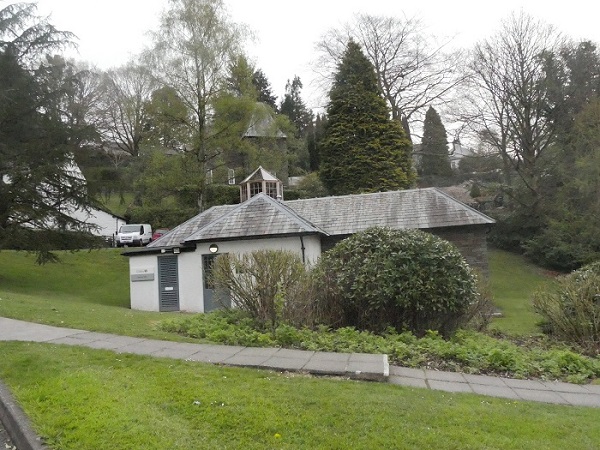
The history of the Beehive
As you start the steep climb from the car park up through the Ambleside campus, from behind a large Rhododendron bush to the right a small unassuming building comes into view. Every single student, from the very first days of the House of Education to today, will have been inside this building and its usage has changed many times over the years. We continue our series looking at some of the most historic buildings at the University of Cumbria with the Beehive, Ambleside.
Greenbank Estate
Scale How, the white mansion house and most iconic building on campus was built in the early 19th century as a home. The grade II listed villa was formerly known as Greenbank and was owned by Mrs Dorothy Harrison (1801-1890), the daughter of Robinson Wordsworth who was a cousin of the famous Lakeland poet William Wordsworth. Dorothy was an orphan by the age of 11 and lived with William and his family at Rydal Mount about a mile and a half up the road. She lived with the Wordsworth family until she married Benson Harrison (1876-1863) at the age of eighteen. William Wordsworth was a frequent visitor to Greenbank.
 The Harrison family made their money from iron. Benson’s father Matthew was a manager of Harrison Ainslie & Co, they had mines in south Lakeland. In 1824 on the death of his father Benson took over as general manager. Benson Harrison was a magistrate, he also held the offices of Justice of the Peace and Deputy Lieutenant. He was a benefactor to Ambleside and built the Old Court House and the Old Town Market Hall.
The Harrison family made their money from iron. Benson’s father Matthew was a manager of Harrison Ainslie & Co, they had mines in south Lakeland. In 1824 on the death of his father Benson took over as general manager. Benson Harrison was a magistrate, he also held the offices of Justice of the Peace and Deputy Lieutenant. He was a benefactor to Ambleside and built the Old Court House and the Old Town Market Hall.
The Greenbank estate was large and encompassed not only the main house but land and extensive grounds complete with tree collection, workers cottages and a barn.
A smoking and billiard room for gentlemen
Nestled in amongst ancient trees and set back into the bank, the building has large windows on each wall with pretty curved brickwork lintels. Made of Lakeland stone with a slate roof, the front exterior has now been painted white. The prettiest feature is a beautiful octagonal shaped lantern window which streams light into the high-ceilinged room.
The Beehive was built as a smoking and billiard room, possibly sometime in the latter half of the 19th century and potentially when the Harrison family occupied Greenbank. It was de rigueur for the prominent Victorian society gentleman, like Benson Harrison, to have a smoking room.
The fashion for smoking arrived in the UK in the early 19th century. The smoking room reached the height of popularity later in the century. Smoking was commonplace but was not a habit that was particularly welcomed amongst the ladies so separate smoking rooms were utilised for the men to retreat to after dinner. Often the smoking room would form a suite of rooms including a billiard room and a library.
I’m imagining the interior (we have no photos that I am aware of) but think heavy dark wooden furniture, maybe some paneling on the walls, sumptuous fabrics in dark greens and reds. Low hanging lamps with large shades over the billiards table. Possibly some bookcases and elegant side tables for drinks and ash trays, perhaps some gilt framed portraits on the walls. As a frequent visitor to Greenbank I wonder if William Wordsworth would have had a few rounds of Billiards in this room?
Busy new inhabitants
 After Mrs Harrison’s death, Greenbank was put up for sale. It was purchased by Charlotte Mason in 1894 for her expanding House of Education school for governesses. The House of Education was established just two years earlier and based in Springfield, another large house just down the road.
After Mrs Harrison’s death, Greenbank was put up for sale. It was purchased by Charlotte Mason in 1894 for her expanding House of Education school for governesses. The House of Education was established just two years earlier and based in Springfield, another large house just down the road.
The old Harrison smoking and billiard room was put to good use as the new school practising room. Local children from the village were invited to the school, and up to twenty at a time would attend ranging in ages from 6-17. Two classes were taught simultaneously, one in each half of the building by the students of Miss Mason’s House of Education. The students would take turns and teach in the practising school for a week at a time overseen by Charlotte Mason herself in weekly ‘crit’ lessons.
The building was nicknamed ‘the Beehive’ during this period, due to the octagonal shape of the lantern window and the ‘busy new inhabitants’. The name stuck and has been used ever since.
Charlotte Mason is quoted as writing ‘we are enjoying our work greatly in our ideal lecture room. How we wish our readers could see the students at their desks. The pretty practising school apart from the main building completes the picture, we expect much joy as the year goes on.
Charlotte Mason College
When Charlotte Mason died in 1923 the House of Education was renamed Charlotte Mason College in honour of its founder. An exclusive teacher training college for ladies the first male students were not enrolled until 1966.
As the college grew the need for teaching practise increased. By the 1970s the implementation of the Education Act and the National Curriculum teacher education had changed, and the college no longer studied the Charlotte Mason method. Teachers were sent out to local schools in the area for their teaching practice.

The University of Cumbria
In 2014, the Ambleside campus came back to life. A large refurbishment project got underway, with some demolition work to open up the campus and refurbishment of the Barn into a library and café area.
The Beehive became a rural growth hub that small businesses could hire for conferences and meetings. In 2017 our university celebrated its tenth anniversary, and a history timeline was installed at each of our campuses. The history timeline can still be seen today on the walls of the Beehive, which includes an original pencil portrait sketch of Charlotte Mason by Fred Yates.
The Beehive today is again muti-use, it is a classroom space, a meeting space, a welcome space for open days and for the alumni association it is our favoured reunion space, used for small groups for buffets and dancing.
What was the Beehive used for when you were a student or staff member? What are your memories of this interesting little building? Drop us an email alumni@cumbria.ac.uk
References
Charlotte Mason: Hidden Heritage and Educational Influence by Margaret A Coombs, James Clarke and Co Ltd 2015
Charlotte Mason: A Pioneer of Sane Education by Doreen Russo
The Story of Charlotte Mason by Essex Cholmondeley, Lutterworth Press 2021
https://archiveweb.cumbria.gov.uk/CalmView/Record.aspx?src=CalmView.Catalog&id=WDBH
http://www.thepeerage.com/p23567.htm
https://www.countrylife.co.uk/architecture/rise-fall-smoking-room-86042
Sarah French - For the children’s sake, profile on Charlotte Mason, Cumbria Life Magazine February 2023, p56-60
